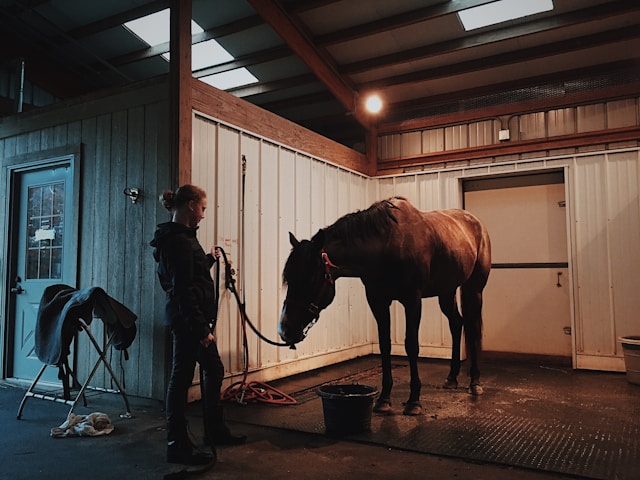
In a world where stress seems to be an inevitable part of daily life, the search for mindfulness practices has become increasingly important. From meditation to yoga, people are exploring various avenues to cultivate a sense of present-moment awareness and tranquility.
Therapy animals, typically dogs but also including cats, horses, and even rabbits, are trained to provide comfort and companionship to individuals in various settings such as hospitals, nursing homes, schools, and workplaces.
There is substantial evidence supporting the idea that interacting with animals, such as therapy animals, can have therapeutic benefits for humans. These benefits include reduced stress, and improved socialization skills.
Understanding Mindfulness
Before delving into the potential benefits of therapy animals for mindfulness, it’s essential to grasp the concept of mindfulness itself.
At its core, mindfulness involves being fully present in the moment, paying attention to thoughts, feelings, bodily sensations, and the surrounding environment without judgment. It’s about cultivating a state of awareness and acceptance, free from the distractions of the past or worries about the future.
The Role of Therapy Animals
Therapy animals, often dogs but also including cats, horses, and other animals, are trained to provide comfort, companionship, and emotional support to individuals in various settings. These animals visit hospitals, nursing homes, schools, and workplaces, offering their unique brand of healing through affection and connection.
Read more: The Difference Between Service Dogs and Therapy Animals
Anchoring in the Present Moment
One of the fundamental aspects of mindfulness is anchoring oneself in the present moment. Interacting with therapy animals naturally facilitates this process.
Whether it’s stroking a dog’s fur or observing the graceful movements of a horse, engaging with animals redirects our attention away from racing thoughts and into the sensory experience unfolding before us. The presence of therapy animals serves as a gentle reminder to be here, now.
Cultivating Bodily Awareness
Mindfulness involves a heightened awareness of bodily sensations and movements. Interacting with therapy animals encourages this bodily awareness as we tune into the tactile sensations of petting, the rhythmic breathing of the animal, and the subtle shifts in our own posture and movements. Through this sensory experience, we deepen our connection with ourselves and the present moment.
Mindful Breathing and Synchronization
Another integral aspect of mindfulness is conscious breathing. Therapy animals provide an opportunity to practice mindful breathing as we synchronize our breath with the animal’s movements.
Taking slow, deliberate breaths while petting an animal induces a sense of calm and relaxation, strengthening the mind-body connection and fostering a harmonious state of being.
Social Interaction and Connection
Interacting with therapy animals also promotes mindful social interactions. Whether it’s engaging in conversation with fellow animal lovers or observing the nonverbal cues of the animal itself, these interactions encourage us to be fully present with others, fostering empathy and connection in the process.
Read more: 5 Unexpected Ways Animals Teach Us About Compassion
Embracing Acceptance and Adaptability
Moreover, therapy animals teach us the importance of acceptance and adaptability, essential components of mindfulness. Unlike human interactions fraught with expectations and judgments, interactions with animals are free from such constraints. We learn to embrace the moment as it unfolds, accepting both its joys and challenges with an open heart and mind.
Scientific Evidence and Research
Research supports the notion that therapy animals can indeed enhance mindfulness. Studies have shown that spending time with animals can lower levels of stress hormones while increasing bonding hormones, indicating a more relaxed and present state of mind aligned with mindfulness principles.
Conclusion
Therapy animals offer a unique pathway to mindfulness, inviting us to slow down, be present, and connect with the world around us. Through their gentle presence and unconditional love, these furry companions have the power to ground us in the here and now, promoting a sense of peace and well-being amidst life’s chaos.
As we continue to explore ways to cultivate mindfulness in our lives, perhaps we can find solace and serenity in the simple act of being with animals.
Do you own an assistance animal? Register your pet today.
The Service Animal Registry of California invites you to have your assistance animal registered in order to designate its status. We also encourage you to take our online classes so you can be fully aware of your rights and gain more knowledge about your support animal.
Finally, we present to you our book entitled, “ASSISTANCE ANIMAL LAWS: LEARN YOUR RIGHTS REGARDING SERVICE ANIMALS, EMOTIONAL SUPPORT ANIMALS, THERAPY PETS, AND OTHER DOGS, CATS, AND ASSISTANCE ANIMALS” to provide you with a complete education on assistance animals.
Purchase your copy of the book by clicking the image below.

